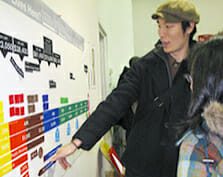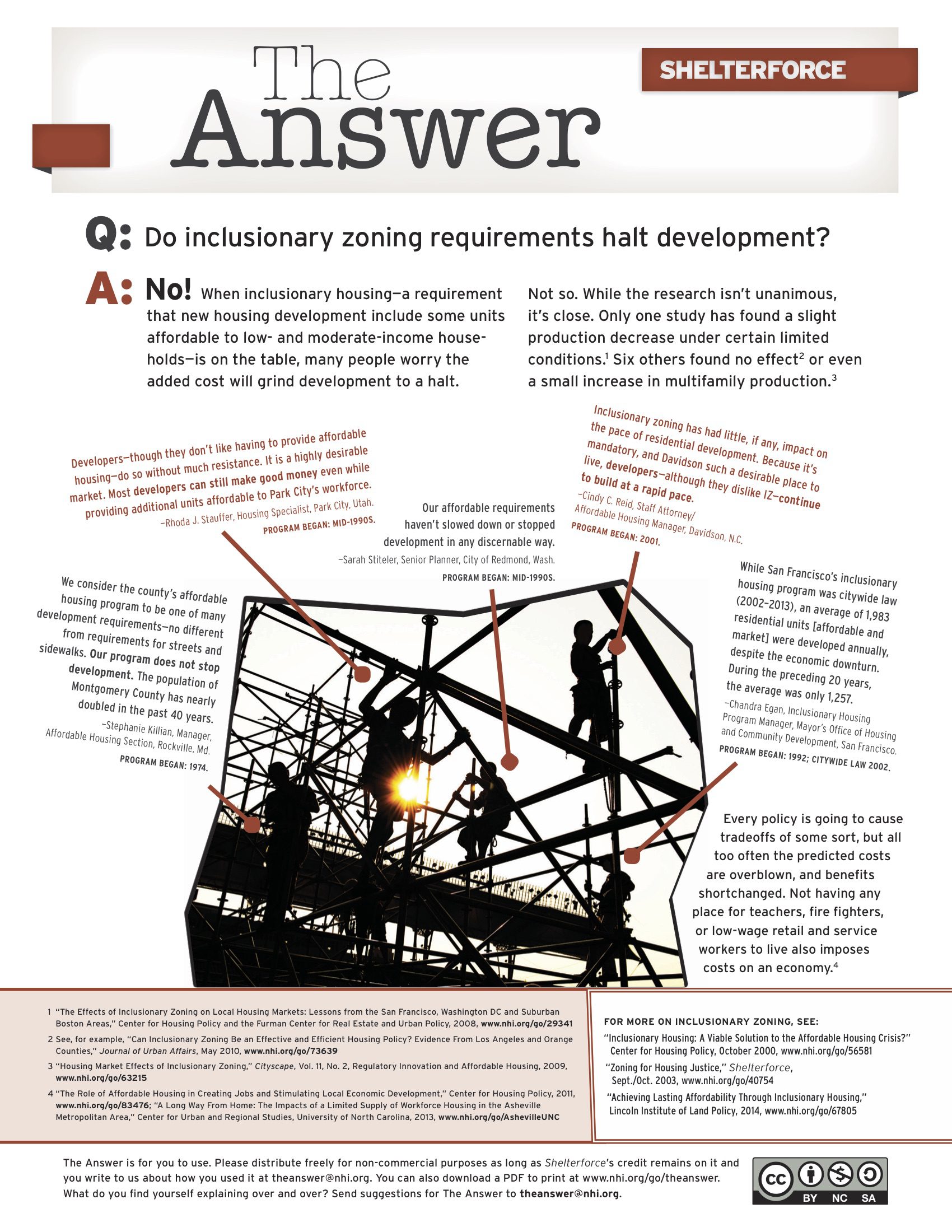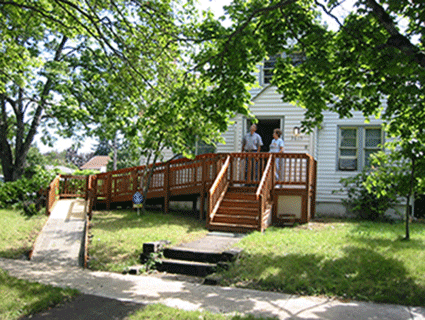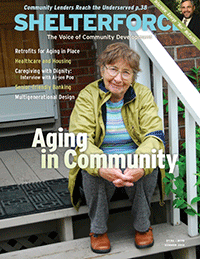
Photo ©2015 Center for Urban Pedagogy
Early in May 2014, New York City’s new mayor, Bill De Blasio, unveiled his long-anticipated affordable housing plan, promising to create or preserve 200,000 units of affordable housing during the next decade.
“This is the largest affordable housing plan in the history of New York City—in fact, the largest plan in the history of any city in the United States of America,” De Blasio told a crowd of cheering Bronx politicians and stakeholders, many in suits and hard hats.
What the mayor didn’t say, of course, was “but be sure to do some research on what ‘affordable’ actually means, because it’s quite tricky to define!”
That’s a quandary that the Center for Urban Pedagogy (CUP) has tackled head on. The New York City–based organization works with designers and nonprofits to create toolkits, posters, brochures, booklets, and other educational materials that help explain intricate policies with graphics and simple language.
One of those projects is the Affordable Housing Toolkit, which is used by more than 90 housing and community organizations to help explain to their constituents what “affordable” housing actually means.
While many people think of affordable housing as a broad term, it is specifically defined by the federal government as housing that costs no more than 30 percent of the occupying family’s income. This means that what’s “affordable” to a teacher making $60,000 living in Manhattan is different from what’s “affordable” to a construction worker making $22,000 living in Queens or a lawyer making $80,000 living in Brooklyn. Yet all these people could conceivably end up in government-deemed “affordable” units.
That reality can be a surprise to people who “associate affordable housing with poverty,” says Ericka Stallings, director of organizing and advocacy at the Association for Neighborhood and Housing Development. They don’t realize, she adds, that affordable housing can be geared toward incomes far above the poverty level. “It also changes their perspective when they realize how many people can’t afford market-rate housing.”
CUP’s Affordable Housing Toolkit includes a printed guidebook titled “What is Affordable Housing?” and a felt wall chart that allows communities to look at income demographics, rents, and proposed developments in their neighborhoods.
The chart shows the different income bands as defined by the U.S. Department of Housing and Urban Development (HUD). In New York, the median income for a family of four (MFI) for 2013 was $83,900—and this number determines who is considered “very low income” (families making zero to 30 percent of MFI, or up to $25,170) up to “middle income” (families making 120 to 250 percent of MFI, or up to $100,680 or $209,750). Developers can theoretically build “affordable housing” units for all of these earners.
The chart includes all government-defined income bands—and a table that breaks down income levels in each neighborhood. In order to better understand their neighborhood’s housing needs, local residents gather around the chart and lay out pieces of colored felt that indicate how many households in the neighborhood are at a given income level. Through the exercise, groups can see the most prevalent income levels, which helps them determine what kinds of “affordable” housing is needed.
“Developers tout the affordable housing they’re creating—but they’re often contributing to displacement because their “affordable” housing is for people who make more than the vast majority of local residents,” says Lucas Shapiro, former senior organizer with Families United for Racial and Economic Equality (FUREE), a Brooklyn-based nonprofit.
Once a group begins to understand what a proposed development is truly offering, they can discuss alternatives, says Christine Gaspar, executive director of CUP.
“So maybe they’ll advocate for fewer units, but at a lower income level—or they will advocate for units across different income categories,” says Gaspar. “But they use the chart to really articulate that argument, so that they fully understand the issues when they’re expressing their needs in a public hearing or negotiation with a developer.”
Because the federal definition uses median family income calculated for the New York City region, housing that is “affordable” to families at a particular income category could still be too expensive for the families actually living in a specific neighborhood.
For example, in East Harlem, the median income for a family of four is $29,200, with the greatest number of residents in the “extremely low income” category. This means affordable units targeted toward “moderate income” and “middle income” families would be inaccessible to a huge percentage of local families.
In contrast, in Park Slope/Carroll Gardens, the median income for a family of four is $84,600. Residents here might advocate for affordable units and community benefits targeted toward a broad range of residents, from “extremely low income” to “middle income” households—since that’s who lives in the area.
The bottom line is each community is different. The chart is “the most effective tool that exists about who will benefit and who will be excluded from new developments,” says Shapiro.
He adds: “New York City is blessed to have an organization like CUP that’s producing materials like this. It’s very challenging to get your head around all these moving pieces and processes that are opaque. Having a visually interactive tool makes it vastly easier to have an informed discussion amongst people who are unfamiliar with these policies.”




Comments